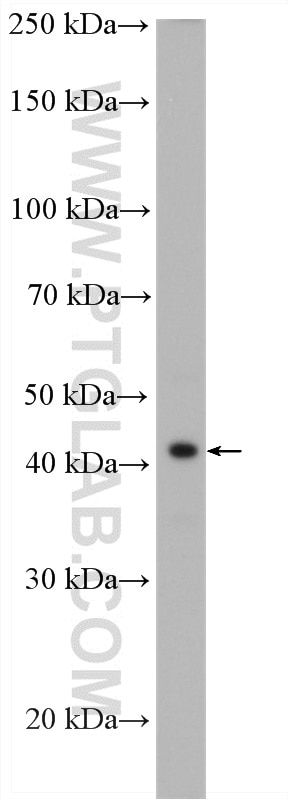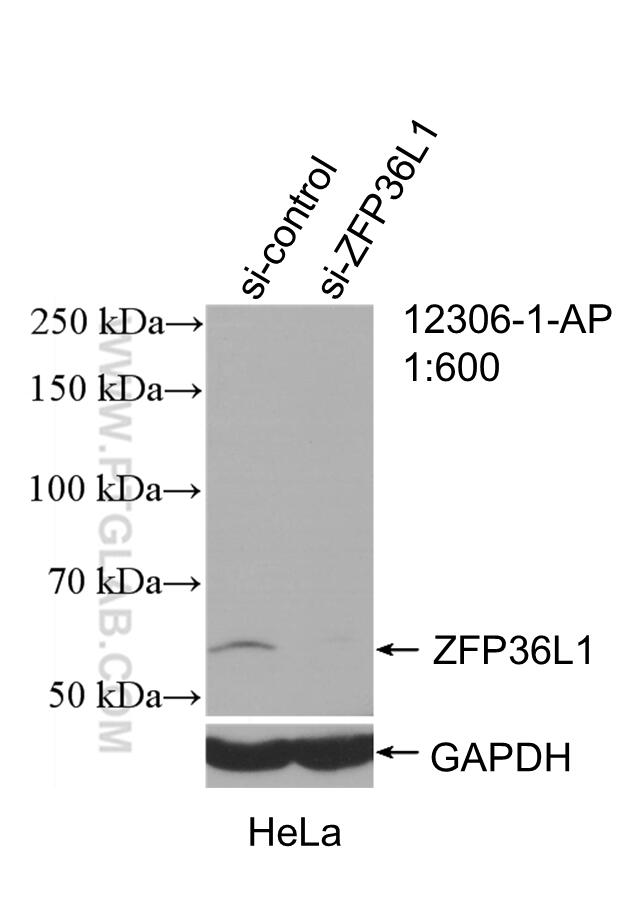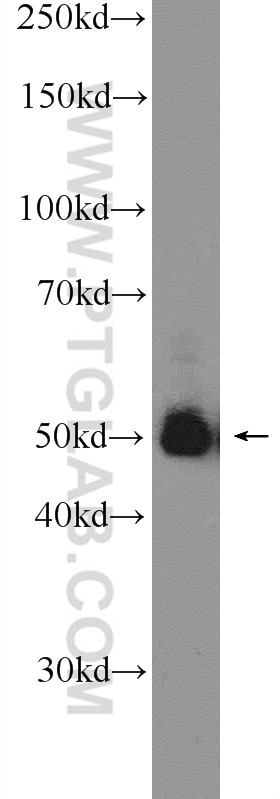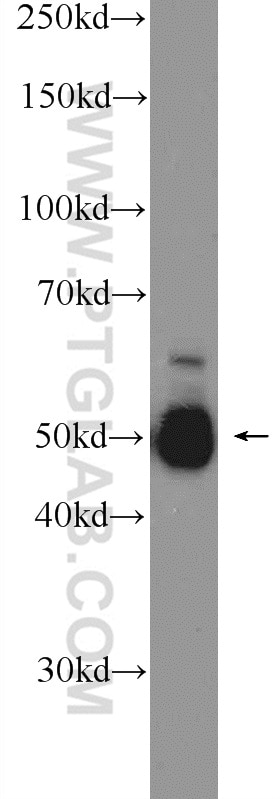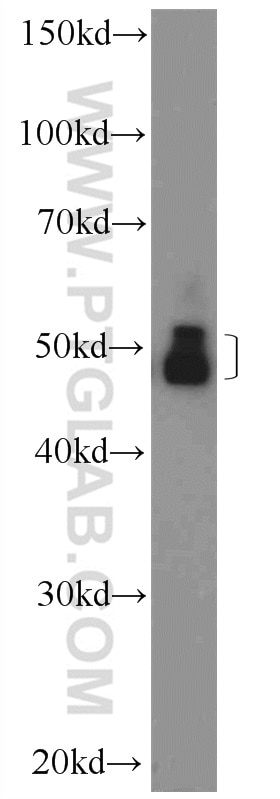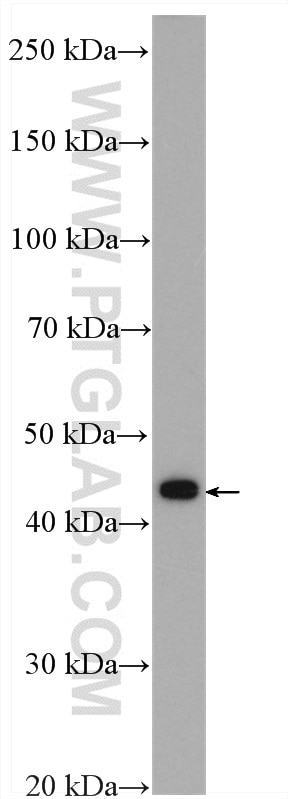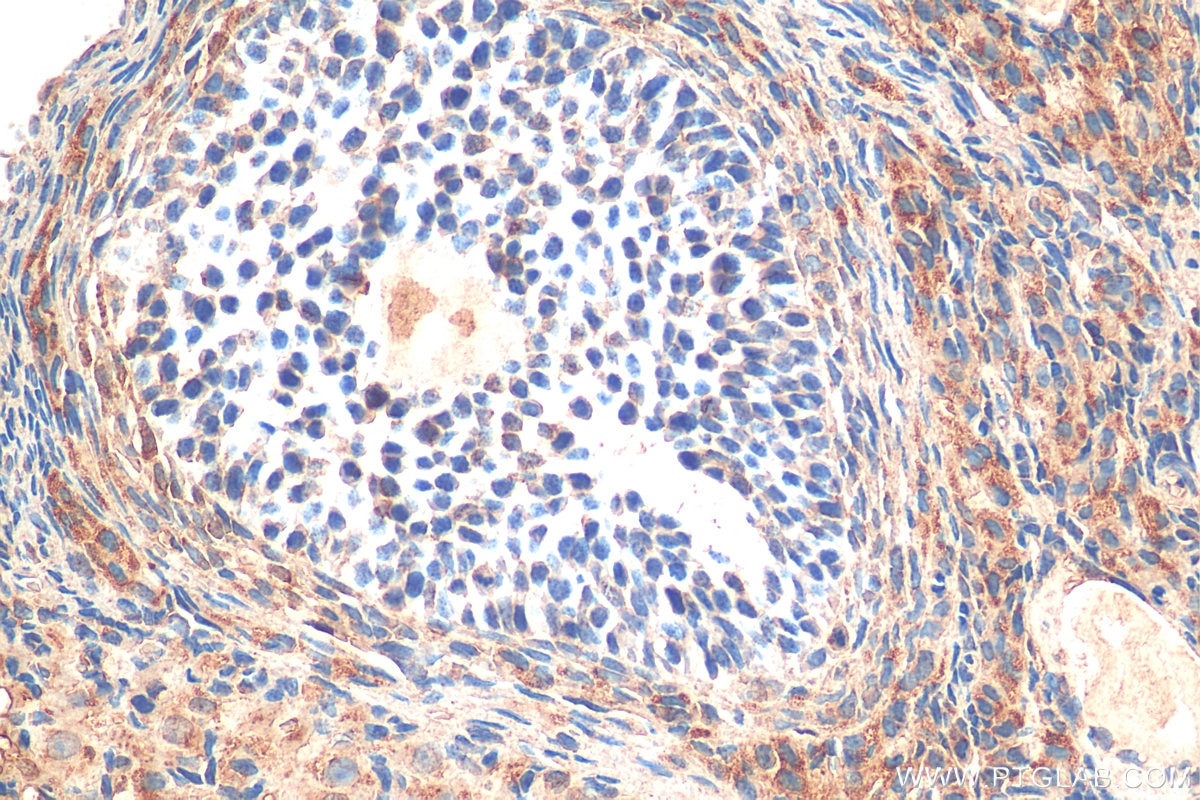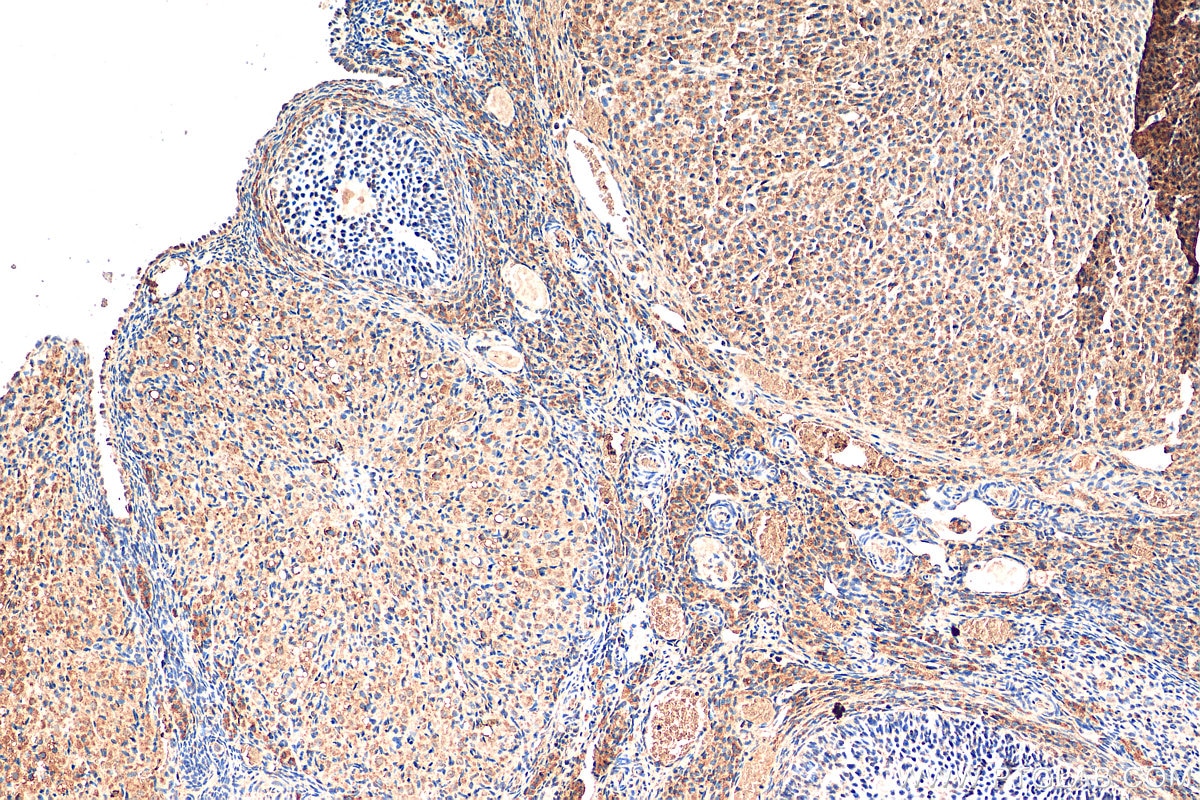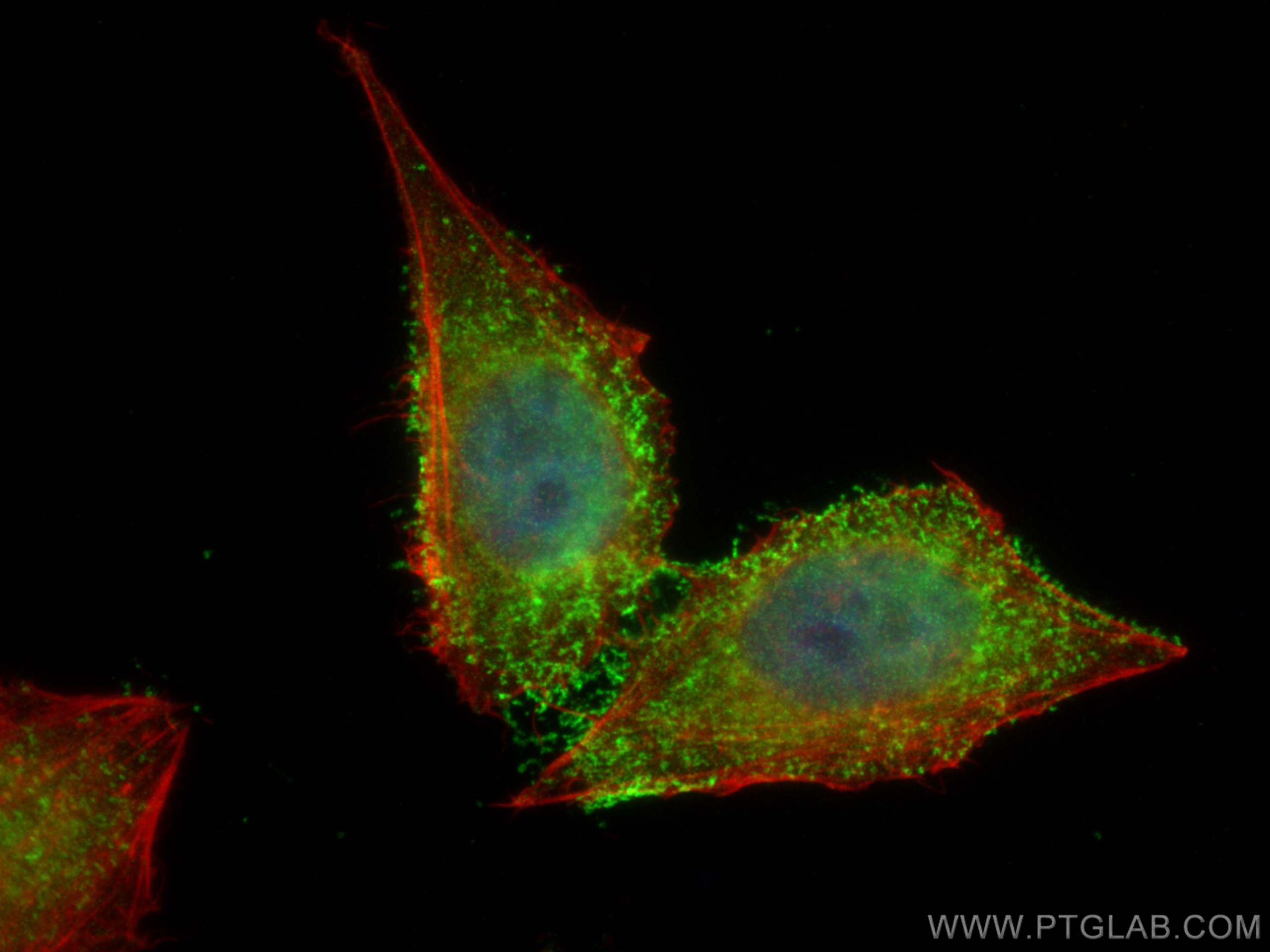- Featured Product
- KD/KO Validated
ZFP36L1/2 Polyclonal antibody, PBS Only
ZFP36L1/2 Polyclonal Antibody for WB, IHC, IF/ICC, Indirect ELISA
Host / Isotype
Rabbit / IgG
Reactivity
human, mouse, rat
Applications
WB, IHC, IF/ICC, Indirect ELISA
Conjugate
Unconjugated
Cat no : 12306-1-PBS
Synonyms
Validation Data Gallery
Tested Applications
Recommended dilution
| Application | Dilution |
|---|---|
| It is recommended that this reagent should be titrated in each testing system to obtain optimal results. | |
Product Information
12306-1-PBS targets ZFP36L1/2 in WB, IHC, IF/ICC, Indirect ELISA applications and shows reactivity with human, mouse, rat samples.
| Tested Reactivity | human, mouse, rat |
| Host / Isotype | Rabbit / IgG |
| Class | Polyclonal |
| Type | Antibody |
| Immunogen | ZFP36L1/2 fusion protein Ag2952 相同性解析による交差性が予測される生物種 |
| Full Name | zinc finger protein 36, C3H type-like 1 |
| Calculated molecular weight | 338 aa, 36 kDa |
| Observed molecular weight | 45-50 kDa |
| GenBank accession number | BC018340 |
| Gene symbol | ZFP36L1 |
| Gene ID (NCBI) | 677 |
| Conjugate | Unconjugated |
| Form | Liquid |
| Purification Method | Antigen affinity purification |
| Storage Buffer | PBS Only |
| Storage Conditions | Store at -80°C. |
Background Information
ZFP36L1, also named as Butyrate response factor 1 or TPA-induced sequence 11b, is a 338 amino acid protein, which is phosphorylated by RPS6KA1 at Ser-334 upon phorbol 12-myristate 13-acetate (PMA) treatment. ZFP36 encodes tristetraprolin (TTP) the prototype of a small family of RBPs, called the ZFP36 family, that are characterised by highly conserved tandem CCCH zinc-finger RNA-binding domains [PMID: 10751406]. ZFP36 is a RBP that promotes RNA decay and negatively regulates the expression of the myogenic regulatory factor MyoD by binding to the 3'UTR of MyoD mRNA [PMID: 25815583]. Mouse satellite cells from Zfp36-deficient mice express increased amounts of MyoD and display impaired satellite activation, demonstrating a role for ZFP36 in the maintenance of quiescence [PMID: 25815583]. The functions of the ZFP36L1 and ZFP36L2 family members have not been evaluated in skeletal muscle stem cell fate, but have been shown to act redundantly to promote quiescence during lymphocyte development. ZFP36L1 has been implicated in the persistence of the marginal zone B lymphocyte population. ZFP36L1 exists three isoform through blasting on NCBI database and can be phosphorylated, so the range of the molecular weight of ZFP36L1 is about 40-50 kDa. (PMID: 26180518, PMID: 17030620). This antibody recognizes both ZFP36L1 and ZFP36L2.
